Chances are, you and most of your friends haven’t experimented yet with growing wild hyacinth (also commonly called camas lily). It isn’t widely grown, but it deserves to be. Gorgeous blue spikes appear on tall stems in late spring after the daffodils and tulips have gone, and each stem is full of tiny star-shaped florets that bloom in succession up thick stems that stand about 30 inches tall without needing to be staked.
I first saw this plant in England at the Chelsea Flower Show, where it was a standout in the sea of blooms that surrounded me as I toured one gorgeous display after another. I had never seen anything like it before, and when I got home I added some bulbs to my vegetable garden border; I absolutely love the way they create a vertical focal point.
As long as the ground isn’t too frozen to dig, there’s still time to add some of these large bulbs to your garden. Order bulbs from mail-order suppliers now while supplies last.
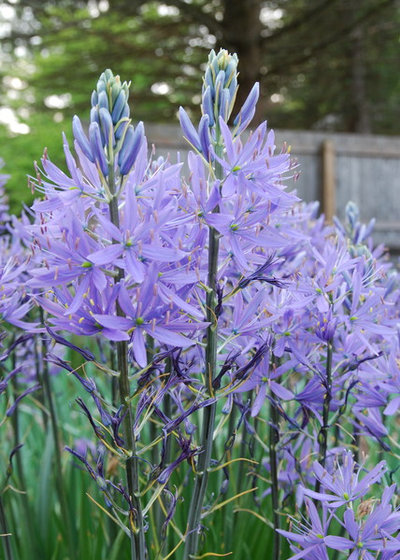
Paintbox Garden
Botanical name: Camassia quamashCommon names: Wild hyacinth, camas, camas lily, quamash
Origin: Native to western North America
Where it will grow: Hardy to -40 degrees Fahrenheit (USDA zones 4 to 8; find your zone)
Water requirement: Average to moist soil
Light requirement: Full sun to partial shade
Mature size: 24 to 30 inches tall
Benefits and tolerances: The species grows in open meadows and along waterways, so it tolerates wet conditions and is widely adaptable to different soil types.
Seasonal interest: Late spring
When to plant: Late fall or winter
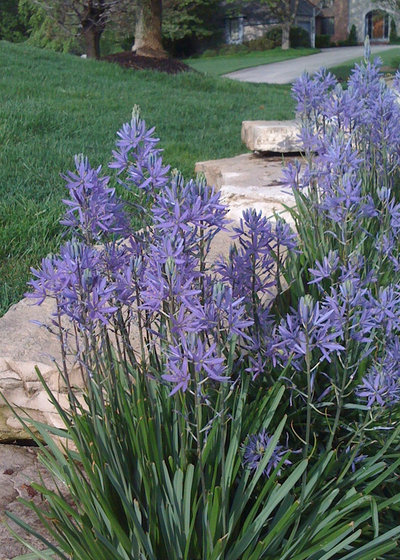
The American Gardener, LLC
Distinguishing traits. Large bulbs produce erect stems with narrow, grass-like leaves and blue, cream or white flowers that bloom from the bottom up (like Liatris, another North American native wildflower).
Camassia leichtlinii ‘Caerulea’ is a blue-flowered type that’s commonly found in the nursery trade.
How to use it. Pair bulbs with a variety of other perennials in mixed borders for a good color display — common chives, lady’s mantle (
Alchemilla mollis) and white candytuft (
Iberis sempervirens ‘Tahoe’) make an ethereal combination if you like chartreuse, blue and white.
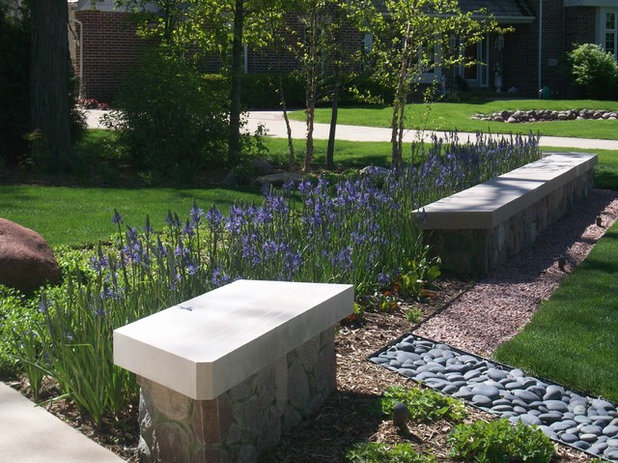
Ginkgo Leaf Studio
I like the way the bulbs look when planted en masse; they make a strong vertical display that draws the eye. The delicate sprays of blue can also soften hardscape features like benches and walkways.
They’re also eye catching when planted in naturalistic sweeps in meadows where other wildflowers, like prairie clover and cornflower, are allowed to grow and self-sow. They can also tolerate light shade, so they could be added to woodland edges or near small native trees, like redbud, serviceberry or dogwood.
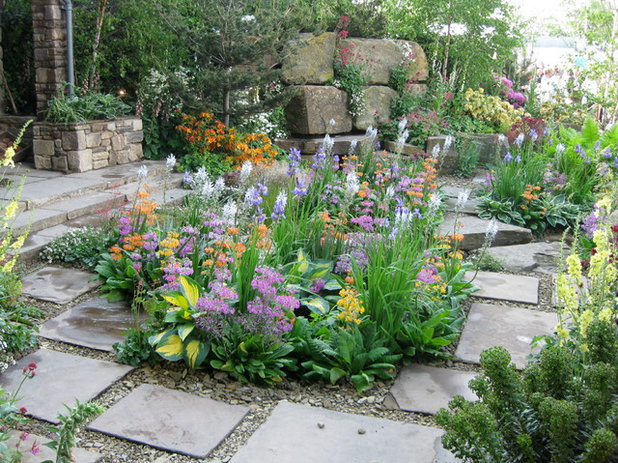
Paintbox Garden
This display garden at the Chelsea Flower Show showcases a variety of light-colored camas bulbs interplanted with delicate sprays of orange and yellow Japanese primrose and variegated iris.
Planting notes. An ephemeral bulb, camas goes dormant once its flowering cycle is completed. You can snip off the stems to clean up the plants, but allow the foliage to die back before you remove the spent leaves.
I find it helps to mark the location of plants in the border, as they disappear and I don’t want to disturb them when adding or removing plants.
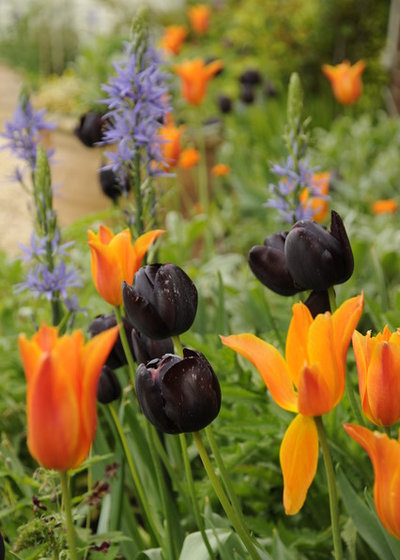
Arthur Road Landscapes
I love this color combination for a spring border — the black and lavender-blue cool down the fiery orange tulips. If you prefer strong blues, look for
C. ‘Blauwe Donau’ (Blue Danube) through mail-order companies.
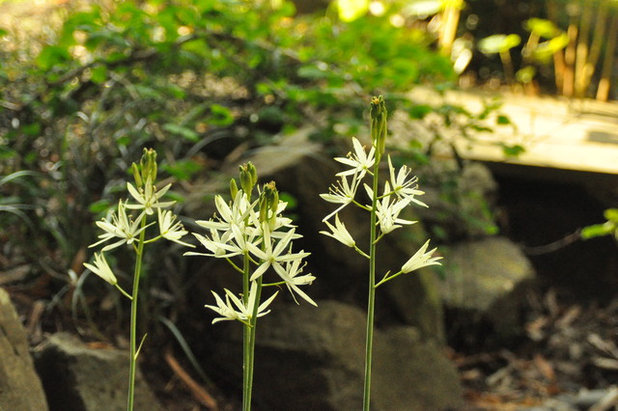
Pistils Landscape Design + Build
Fun fact: Blue camas bulbs are edible and have been an important food source for First Nation peoples for hundreds of years. There’s a white cultivar called ‘Sacajawea’ (
Camassia leichtlinii ‘Sacajawea), named for the native scout who helped the Lewis and Clark expedition group (1804–1806) survive the wilderness trek.





